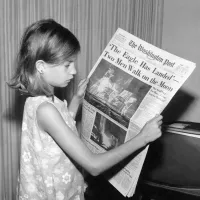Job Corps is a U.S. Department of Labor program providing free education and vocational training to individuals aged 16-24. It aims to improve the employability of young people by offering academic instruction, career technical training, and support services. The program focuses on helping participants obtain industry-recognized credentials, high school diplomas or GEDs, and secure employment in high-growth industries. Job Corps also emphasizes developing life skills and fostering responsible citizenship. It serves as a crucial resource for young adults seeking pathways to economic self-sufficiency and career advancement.
19 hours ago : Labor Department Suspends Job Corps Centers Citing Danger and High Costs.
The Labor Department suspended Job Corps centers due to concerns about student safety and significant taxpayer costs. The Trump Administration also sought to close centers nationwide, leading to program elimination.
1962: Youth Unemployment Rate
In 1962, the youth unemployment rate was twice the non-youth unemployment rate. The Job Corps initiative was designed to allow youth members to improve national parks and forests for half of their time, and improve their basic education skills for the other half.
1963: Job Corps Operational Plans Developed
By 1963, the Job Corps' operational plans, costs, and budgets were well developed, including coordination with the U.S. Forest Service and the National Park Service, and Memoranda of Understanding (MOUs) executed among the agencies. Initiating legislation and budgetary authorizations were drafted by the Kennedy Administration and introduced in both houses of Congress.
1964: Job Corps and Vietnam War Manpower Shortages
In 1964, President Johnson suggested that the Job Corps could be useful in preparing young men to meet the mental and physical requirements for military enlistment due to military manpower shortages for the Vietnam War.
1964: Job Corps Inception
Since its inception in 1964 under the Economic Opportunity Act, Job Corps has served more than 2 million young people.
1993: Mathematica Evaluations and Reports
From 1993, Princeton University affiliate research organization Mathematica produced a series of evaluations and reports on the Job Corps for the agency's parent, the U.S. Department of Labor, and for independent academic journals.
1998: Mathematica Study
From 1998, according to a 2003 Mathematica study (withheld from the public by the government until 2006) indicated negative impacts on childless female participants' incomes through 2001. The Heritage Foundation cited the study in a 2009 critique
2001: Mathematica Study
In 2001, a Mathematica study was cited by the Heritage Foundation in a 2009 critique, noting that income gains for participants (vs. comparable non-participants) was "never more than $25.20" per week.
2003: Mathematica Study
In 2003, A Mathematica study (withheld from the public by the government until 2006) indicated negative impacts on childless female participants' incomes from 1998 through 2001, and was cited by the Heritage Foundation in a 2009 critique
2006: Release of Mathematica Study
In 2006, the government released a 2003 Mathematica study that indicated negative impacts on childless female participants' incomes from 1998 through 2001. The Heritage Foundation cited the study in a 2009 critique
2008: Mathematica Evaluations and Reports
Until 2008, Princeton University affiliate research organization Mathematica produced a series of evaluations and reports on the Job Corps for the agency's parent, the U.S. Department of Labor, and for independent academic journals.
2009: The Heritage Foundation Critique
In 2009, during the Obama administration, the conservative think-tank, The Heritage Foundation, described the program's 40-year history as a "record of failure".
2012: Job Corps Graduate Placement
In Program Year 2012, approximately 75 percent of Job Corps’ graduates were reportedly placed. Slightly more than 60 percent joined the workforce or enlisted in the military, while 13.5 percent of Job Corps’ graduates enrolled in education programs.
2015: Washington Post Report
In 2015, the Washington Post noted violence and even murders had occurred at some Job Corps sites. The report also highlighted failures in reporting and investigating incidents of serious misconduct, such as drug abuse and assaults.
2016: Safety Incidents
From 2016 to 2017, a report from the Government Accountability Office cited over 13,500 safety incidents at Job Corps centers.
April 2017: Labor Department Inspector General Conclusion
In April 2017, the Trump administration's Labor Department inspector general concluded that the agency could not show "beneficial training outcomes."
2017: Safety Incidents
From 2016 to 2017, a report from the Government Accountability Office cited over 13,500 safety incidents at Job Corps centers.
2017: Labor Department Deputy Inspector General Testimony
In 2017, Labor Department deputy inspector general Larry D. Turner, testifying before a Congressional committee, reported that Job Corps officials and contractors often failed to report potentially serious criminal misconduct to law enforcement.
2017: Alexander Acosta on Job Corps Reform
In 2017, President Trump's Labor Secretary, Alexander Acosta, stated that the $1.7 billion annually budgeted Job Corps program "requires fundamental reform".
2018: Annual Budget
In 2018, the Job Corps had a $1.7 billion annual budget, providing about 37,000 training slots for young people annually.
2019: Youths Served Annually
As of 2019, Job Corps serves over 60,000 youths annually at Job Corps centers throughout the country.
2020: COVID-19 Pandemic and Job Corps
Starting in 2020, the COVID-19 pandemic triggered the closure of Job Corps physical sites, and the organization attempted to shift to online education, which led to enrollment dropping by about 75 percent.
Mentioned in this timeline
CBS is a major American commercial broadcast television and radio...

The Vietnam War was a conflict in Vietnam Laos and...

A tank is an armored fighting vehicle designed for front-line...

News encompasses information about current events disseminated through various media...

Milwaukee is the most populous city in Wisconsin and the...
Princeton University located in Princeton New Jersey is a private...
Trending

26 minutes ago Jamie Dimon supports Elon Musk, warns of China, and Greenland reaches out.

18 days ago Trey Hendrickson and Bengals Face Off: Contractual Issues and Uncertain Future

1 hour ago Starodubtseva at French Open Amidst Italian Success and Alcaraz Challenge

1 hour ago Tommy Paul Advances, Khachanov Battles, Shelton Faces Gigante: French Open Updates

1 hour ago Elena Rybakina's Power Struggle at Roland Garros and Rivalry with Jelena Ostapenko

1 hour ago Alcaraz Set to Face Dzumhur After Fall; Tennis Player's Unaware Victory
Popular

Steve Irwin the Crocodile Hunter was an influential Australian zookeeper...

Cristiano Ronaldo often called CR is a Portuguese professional footballer...

Donald John Trump is an American politician media personality and...

LeBron James nicknamed King James is a professional basketball player...

Michael Jordan also known as MJ is an American businessman...

Rahm Emanuel is an American politician and diplomat He served...